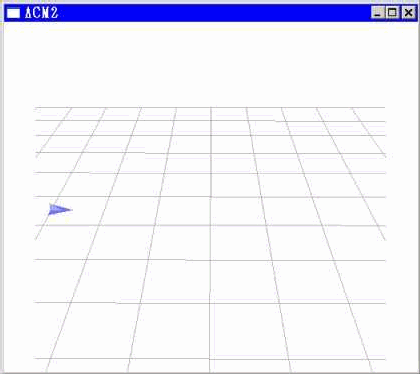
Aileron roll
Encyclopedia

Aerobatic maneuver
Aerobatic maneuvers are flight paths putting aircraft in unusual attitudes, in air shows, dog fights or competition aerobatics. Aerobatics can be performed by a single aircraft or in formation with several others...
in which the aircraft does a full 360° revolution about its longitudinal axis. When executed properly, there is no appreciable change in altitude and the aircraft exits the maneuver on the same heading as it entered. This is commonly one of the first maneuvers taught in basic aerobatics courses.
Execution
The aileron roll is commonly executed through the application of full aileronAileron
Ailerons are hinged flight control surfaces attached to the trailing edge of the wing of a fixed-wing aircraft. The ailerons are used to control the aircraft in roll, which results in a change in heading due to the tilting of the lift vector...
in one direction. In some lower powered general aviation
General aviation
General aviation is one of the two categories of civil aviation. It refers to all flights other than military and scheduled airline and regular cargo flights, both private and commercial. General aviation flights range from gliders and powered parachutes to large, non-scheduled cargo jet flights...
and aerobatic training aircraft, prior to applying aileron input, the pilot must begin the maneuver by trading altitude for airspeed (i.e. diving). This helps achieve enough airspeed to complete the roll without losing rudder and aileron control. The minimum airspeed needed depends on the aircraft's design, but is generally about 120 to 200 knots. Because full aileron is applied, structural limitations prevent many aircraft from performing the maneuver at very high speeds.
Starting from level flight, the pilot pitches the aircraft up about 10 to 30 degrees above the horizon, into a brief climb. The purpose of pitch-up is twofold. This causes an increase in altitude which minimizes altitude loss and airspeed gain. As the aircraft begins to roll, it starts to lose lift. When the wings are vertical, the only lift generated is a small amount from the fuselage, and the aircraft will begin to lose altitude. The brief climb compensates for the loss, allowing the aircraft to complete the roll at the same altitude the maneuver began. When the aircraft is completely inverted, the increased pitch results in greater angle of attack
Angle of attack
Angle of attack is a term used in fluid dynamics to describe the angle between a reference line on a lifting body and the vector representing the relative motion between the lifting body and the fluid through which it is moving...
, enabling the inverted wing to generate lift.
After the initial pitch-up, the pilot places the elevators
Elevator (aircraft)
Elevators are flight control surfaces, usually at the rear of an aircraft, which control the aircraft's orientation by changing the pitch of the aircraft, and so also the angle of attack of the wing. In simplified terms, they make the aircraft nose-up or nose-down...
in the neutral position. Failure to do this will cause the aircraft to continue pitching up during the upright part of the maneuver, and downward in the inverted part, resulting in something resembling a barrel roll
Barrel roll
A barrel roll is an aerial maneuver in which an airplane makes a complete rotation on its longitudinal axis while following a helical path, approximately maintaining its original direction. It is sometimes described as "a combination of a loop and a roll"...
. The pilot then applies full aileron, accomplished by moving the stick to either the right or left. As the aircraft rolls about its longitudinal axis, the nose will begin to drop. Upon completing the roll, the nose will usually be 10 to 30 degrees below the horizon, so the pilot will need to pitch-up to return to level flight.
An aileron roll is an unbalanced maneuver. As the roll begins, the aircraft will have a tendency to yaw away from the angle of bank, referred to as "adverse yaw." The pilot will usually need to apply the rudder in the direction of the bank to keep the aircraft balanced. An aircraft performing an aileron roll will actually fly along a slightly helical path, and a very light, positive g force
G force
The g-force associated with an object is its acceleration relative to free-fall.It may also refer to:* G-Force , a 2009 film by Disney** G-Force , a 2009 video game based on the film...
will be maintained.
Uses
The aileron roll is commonly used in air shows and aerial combat training. The use of the pure aileron roll in air combat is contentious, but many common maneuvers bear heavy dependence on the aileron roll. Examples of this are the Immelmann turnImmelmann turn
The Immelmann turn refers to two different aircraft maneuvers.-In aerobatics:In modern aerobatical parlance, an Immelmann turn is an aerobatic maneuver of little practical use in aerial combat, and is a different maneuver altogether from the original dogfighting tactic of World War I from which it...
, barrel roll
Barrel roll
A barrel roll is an aerial maneuver in which an airplane makes a complete rotation on its longitudinal axis while following a helical path, approximately maintaining its original direction. It is sometimes described as "a combination of a loop and a roll"...
, and Split S
Split S
The Split S is an air combat maneuver mostly used to disengage from combat. To execute a Split S, the pilot half-rolls his aircraft inverted and executes a descending half-loop, resulting in level flight in the exact opposite direction at a lower altitude....
.
An aileron roll carried out by a pilot as a sign of victory or celebration is known as a victory roll.
Test pilots commonly employ the aileron roll to evaluate an aircraft's turning characteristics (e.g. time to turn).

